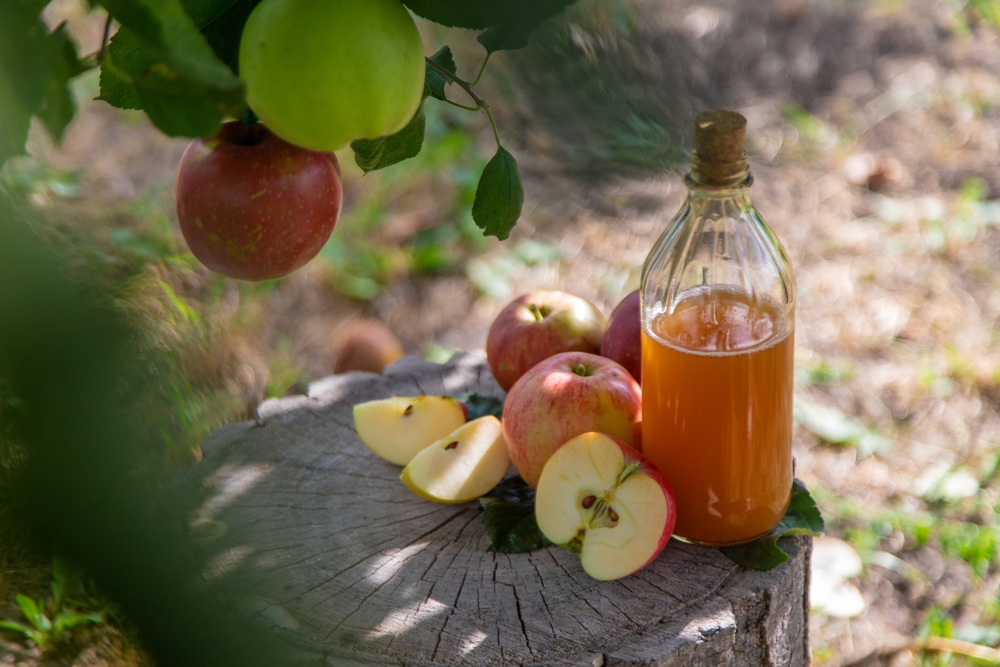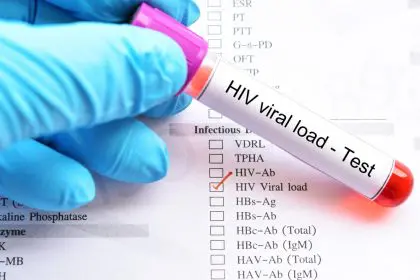Apple cider vinegar went from being that dusty bottle hiding behind your olive oil to the star ingredient everyone swears by for everything from weight loss to window cleaning. If you’ve walked down any grocery aisle lately, you’ve probably noticed an entire section dedicated to different brands and varieties of what used to be a simple cooking ingredient.
The transformation of apple cider vinegar from basic pantry staple to wellness superstar didn’t happen overnight, but it sure feels like it did. One day it was just something your grandmother used for pickling vegetables, and the next day your coworker is telling you about their morning ACV shot routine while scrolling through TikTok videos about its miraculous benefits.
This humble fermented apple juice has managed to capture American attention in ways that would make marketing executives weep with envy. The story of how it conquered kitchen counters and morning routines across the country reveals a lot about how we approach health trends and the power of social media to turn ordinary products into must-have items.
The wellness world discovered liquid gold
Apple cider vinegar’s journey to wellness fame started quietly with health enthusiasts who began experimenting with traditional remedies and folk medicine. These early adopters weren’t necessarily looking for the next big health trend. They were often people dealing with specific health concerns who stumbled upon ACV through research into natural alternatives.
The initial buzz focused on potential digestive benefits and blood sugar management. People started sharing personal stories about how adding apple cider vinegar to their routines seemed to help with various issues. These weren’t clinical trials or medical recommendations, just regular people reporting their experiences and encouraging others to try it themselves.
The transition from niche health circles to mainstream awareness happened gradually, then suddenly. Health blogs started featuring ACV in articles about natural remedies. Wellness influencers began incorporating it into their morning routines. Before long, what started as whispered recommendations between health-conscious friends became loud proclamations across social media platforms.
The appeal of apple cider vinegar fit perfectly into America’s growing interest in natural wellness solutions. In an era where people were becoming more skeptical of processed foods and pharmaceutical solutions, a simple, natural product that grandmothers had used for generations felt both innovative and trustworthy.
Social media turned vinegar into viral content
The explosion of apple cider vinegar popularity directly correlates with the rise of health and wellness content on social media platforms. Instagram posts featuring morning routines started including ACV shots alongside green smoothies and yoga poses. YouTube channels dedicated entire videos to ACV benefits and how to incorporate it into daily life.
TikTok took apple cider vinegar content to another level entirely. Short videos demonstrating quick ACV shots, mixing recipes, and before-and-after testimonials created a viral feedback loop that introduced the product to demographics who had never considered adding vinegar to their wellness routines.
The visual appeal of apple cider vinegar content worked surprisingly well for social media. The amber liquid in glass bottles looked aesthetically pleasing in flat lay photos. The ritual of preparing and consuming ACV shots created engaging video content that felt both authentic and aspirational.
Influencers and content creators found apple cider vinegar to be ideal content material because it was accessible, affordable, and generated strong engagement from audiences eager to try new wellness trends. Unlike expensive supplements or complicated health protocols, ACV was something viewers could easily purchase and experiment with themselves.
The miracle cure narrative took hold
As apple cider vinegar’s popularity grew, so did the list of benefits attributed to it. What started with digestive health claims expanded to include weight loss, clearer skin, better hair, improved energy levels, and detoxification properties. The more popular it became, the more miraculous its purported effects seemed to grow.
The beauty of apple cider vinegar as a wellness trend was its versatility. People could use it for completely different reasons and still feel like they were part of the same health movement. Someone drinking it for weight loss could bond with someone using it for skin care, even though they were pursuing entirely different goals.
Personal testimonials became the primary form of evidence supporting these various claims. Social media platforms filled with people sharing their ACV success stories, creating a form of crowd-sourced validation that felt more convincing to many than traditional scientific evidence.
The narrative around apple cider vinegar also benefited from its historical associations. People liked the idea that they were using something their ancestors had relied on, which made it feel both time-tested and authentically natural in ways that modern supplements couldn’t match.
Grocery stores caught the vinegar fever
The retail response to apple cider vinegar’s popularity explosion was swift and comprehensive. Grocery stores expanded their vinegar sections to accommodate multiple brands, varieties, and price points. What used to be a single bottle option became an entire product category with organic options, different acid levels, and specialty formulations.
The “mother” became a selling point that most consumers didn’t fully understand but recognized as important. Cloudy, unfiltered apple cider vinegar with visible sediment commanded premium prices over clear, filtered versions, even though many buyers couldn’t explain exactly why the cloudiness was supposedly better.
Specialty health food stores and online retailers capitalized on the trend by offering artisanal and small-batch apple cider vinegar options. These premium products often cost significantly more than traditional cooking vinegar, but consumers were willing to pay higher prices for products marketed specifically for wellness purposes.
The packaging and marketing of apple cider vinegar evolved to match its new status. Bottles designed for wellness use featured different labeling, larger sizes for daily consumption, and prominent displays of health-focused messaging that distinguished them from cooking vinegars.
The routine became the ritual
Apple cider vinegar consumption developed its own culture of preparation and consumption rituals that transformed a simple ingredient into a lifestyle practice. The morning ACV shot became a wellness ritual that people shared on social media and discussed with friends like a meaningful daily practice.
Different preparation methods emerged as people experimented with making ACV more palatable. Mixing it with water, adding honey, combining it with lemon juice, or incorporating it into smoothies became standard approaches that made the strong, acidic taste more manageable for daily consumption.
The timing of ACV consumption became almost as important as the consumption itself. Morning shots, pre-meal drinks, and evening routines all developed their own followings, with people debating the optimal timing for maximum benefits.
Some people incorporated apple cider vinegar into elaborate morning wellness routines that included meditation, journaling, and other health practices. The ACV shot became a symbolic start to a day focused on health and self-care, regardless of its actual physiological effects.
From trend to permanent pantry resident
Apple cider vinegar’s staying power suggests it has moved beyond temporary trend status to become a permanent fixture in American wellness culture. Unlike many health fads that flame out after a few years, ACV has maintained consistent popularity and continues attracting new users.
The accessibility of apple cider vinegar contributes to its endurance. Unlike expensive supplements or complicated wellness protocols, ACV is relatively affordable and easy to incorporate into existing routines. This low barrier to entry allows people to experiment without significant financial commitment.
The versatility of apple cider vinegar also supports its longevity. People can use it for cooking, cleaning, wellness routines, or beauty treatments, which means it serves multiple functions that justify keeping it around even if specific health claims don’t pan out.
The social aspect of apple cider vinegar use has created communities of people who share recipes, tips, and experiences. This ongoing engagement keeps the product relevant and helps maintain interest even as other wellness trends come and go.
Modern apple cider vinegar culture represents a broader American approach to wellness that values natural products, personal experimentation, and community sharing of health experiences. Whether the specific health claims prove scientifically valid or not, ACV has successfully established itself as a symbol of taking control of personal health through simple, accessible means.
The transformation of apple cider vinegar from forgotten pantry item to wellness staple illustrates how quickly consumer behavior can shift when the right combination of social media, health trends, and accessible products align to create cultural momentum around everyday items.


















